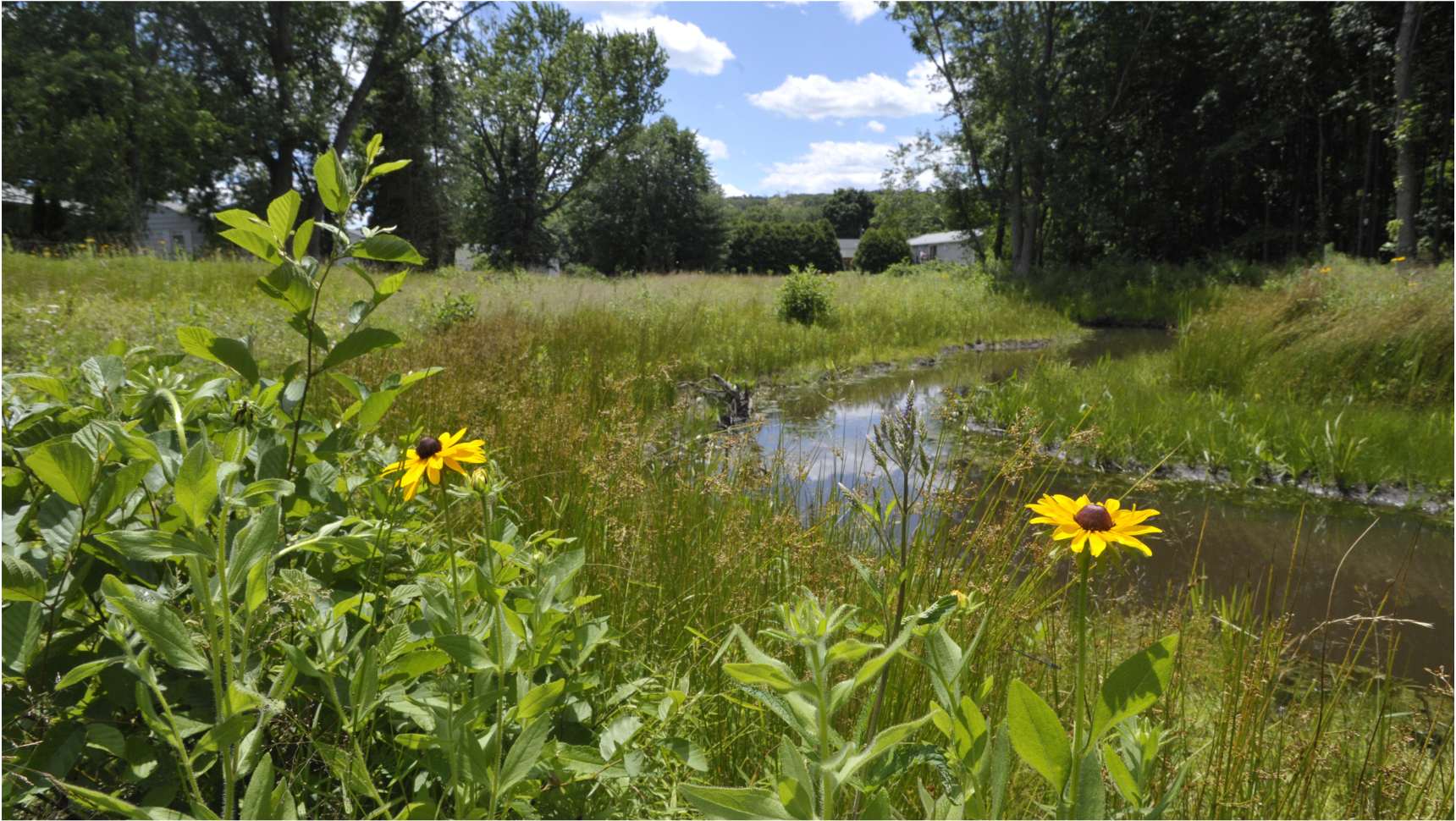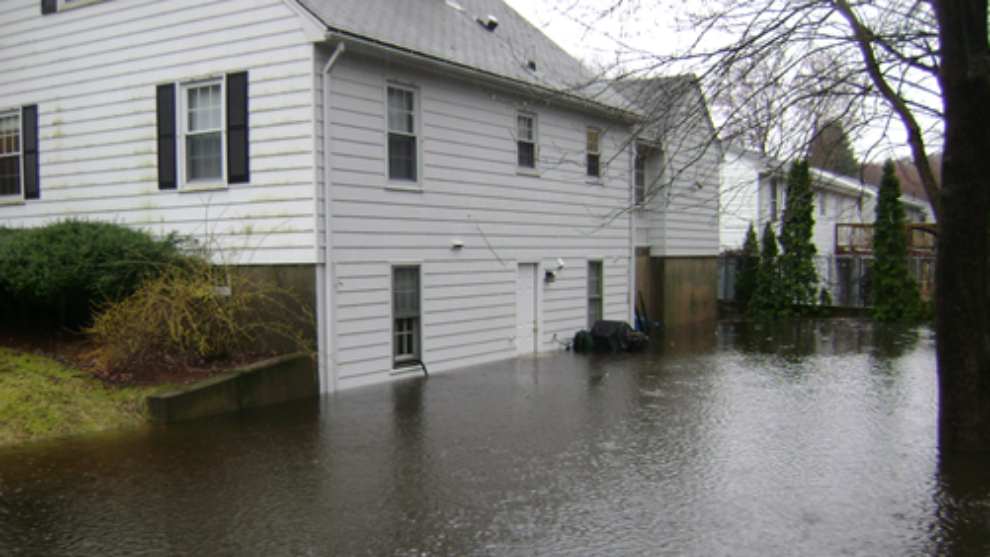Using Natural Systems to Reduce Flooding Risk


For generations, conventional wisdom has been to rely on traditional gray or built infrastructure to protect communities from flood impacts. These traditional approaches have included levees, floodwalls, pumping stations, and hardening or flood-proofing existing structures. Flood-proofing could include raising a structure or a road, waterproofing lower levels susceptible to flooding, or using flood-proof doors.
Though Fuss & O’Neill has designed and built a good amount of this traditional infrastructure throughout southern New England, the resilience of some of these designs may be at risk as questions about the scale of future increased flood intensities and sea level rise are impossible to accurately predict. For example, conventional service life for most infrastructure is 50 years, which is often expected to extend to 75 years or more. In 50 to 75 years, will sea level rise be 2 feet or 5 feet, will the 1% return frequency design storm be relatively the same as today, or will it be 2 more inches of rainfall?
With conventional infrastructure, underestimating these risks can lead to a catastrophic failure of the systems, such as water overtopping a flood wall (which happened in New Orleans). Overestimating these risks can substantially and unnecessarily increase costs for infrastructure. For example, adding three feet to a pile flood wall system would require a total of nine feet of additional pile height (assuming a simplified 1 to 2) exposed to buried ratio, which would add significant costs to a project. In cases where future risk (e.g., climate change) cannot be accurately predicted, it is typically prudent to develop a design that would allow for some future adaptation (i.e., attaching risers to a pile flood wall system). However, that still requires some additional investment, such as burying enough piling to support those potential future loads.
Alternatively, natural systems could provide a better system than conventional gray infrastructure as these systems can adapt to changes, as compared to systems constructed with riprap, concrete, and steel. Natural systems can adapt to naturally occurring risks (e.g., erosion and scour) better than conventional gray infrastructure, which, once undermined or overtopped, can catastrophically fail.

Gray infrastructure traditionally disconnects communities from the water resources that are the sources of flooding by constructing features such as levees and floodwalls. Another major advantage of natural systems is that they connect communities to resources by access and they restore natural systems that have been significantly altered over the years. These systems can also be substantially less costly than conventional systems designed to manage the same flood as they largely require grading and vegetative stabilization as compared to concrete and steel.
A great example of a natural systems approach is our floodplain restoration project in the Janet Drive residential neighborhood in West Warwick, RI. Approximately eight homes in this neighborhood routinely flooded during major inland storms. Instead of building a wall around those homes, Fuss & O’Neill designed a natural system that day-lighted a significantly undersized culvert and replaced it with a stream designed to replicate a natural stream. We lowered the surrounding area to provide more conveyance and storage capacity. We also built a short berm below to provide additional protection.
Over the last decade, this natural-based system has successfully protected these homes, provided resiliency to future conditions, and provided green space access to this neighborhood.
Projects like this have a number of funding sources available. For the Janet Drive project, the USDA Natural Resources Conservation Service provided 100% of the funding for design, permitting, and construction through their floodplain easement program. These sources of funding are not available for traditional gray infrastructure.
We keep up-to-date on developing technologies, emerging concerns, climate projections, and new regulations. Subscribe to be the first to know how these ever-changing industry topics impact you and how we’re responding.
"*" indicates required fields